
Of sentinels, terrors & monarchs


Fearsome predators are stalking the savannahs of Africa. With pointed, gleaming teeth and razor-sharp claws, they roam in packs and instil fear into the heart of their prey. They are ferocious fighters, capable of taking on deadly enemies through lightning-fast reflexes and almost reckless courage. They are dwarf mongoose, and each one is roughly the size and weight of a soda can.
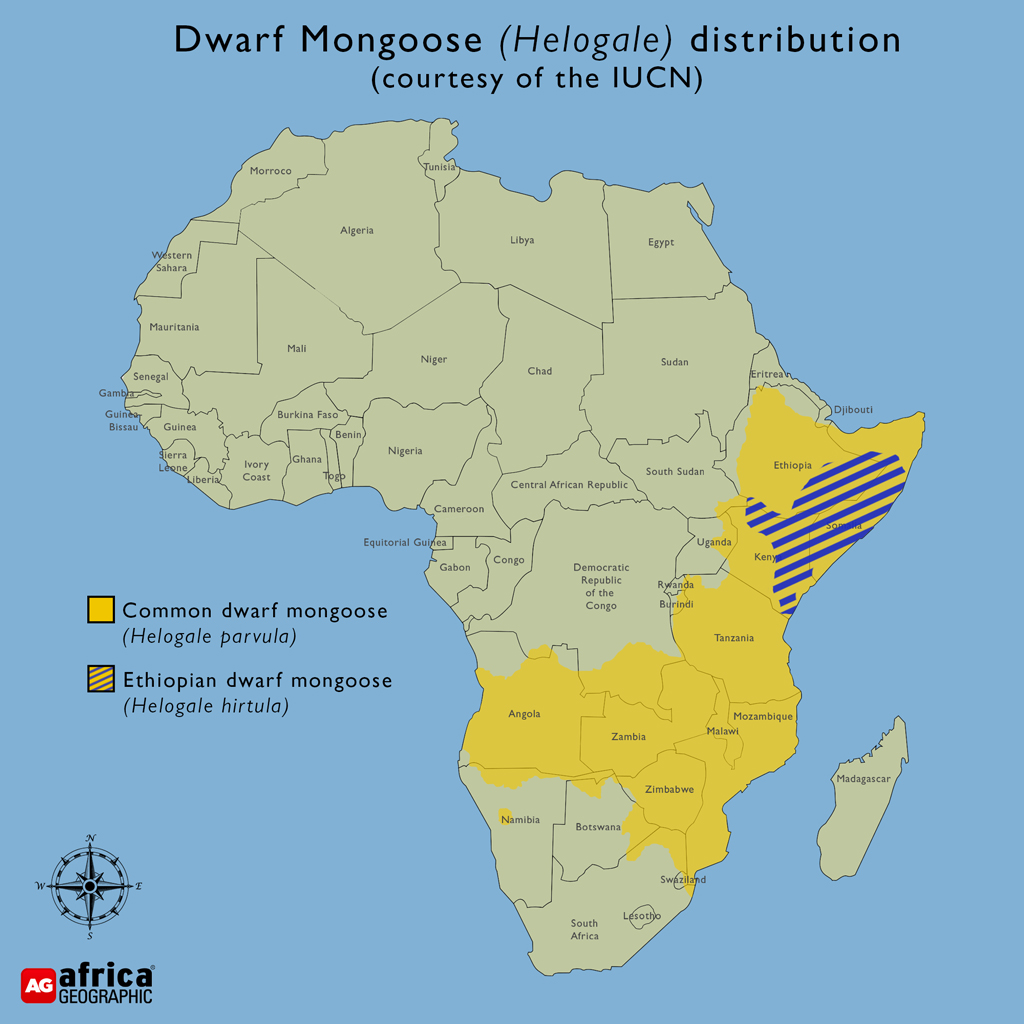
Pint-sized predators
Africa’s smallest mammalian predator – the dwarf mongoose (Helogale species) – is an animal that is remarkably easy to anthropomorphise. Something in their beady, shining eyes speaks to considerable intelligence and personality, wrapped in an adorable, fluffy package. They are found from Ethiopia and Somalia to the northeastern corner of South Africa. Dwarf mongoose are a common sight on safari, though often dismissed in favour of the bigger and “more exciting” animals (to find the ideal African safari and spot dwarf mongooses in the wild, click here). Yet a bit of patience guarantees a rewarding sighting in their charming company.
Dwarf mongooses belong to the Herpestidae family, comprising over thirty mongoose species (including suricates/meerkats) spread across Europe, Africa, and Asia. Unbeknownst to most, there are two species of dwarf mongoose: the common dwarf mongoose (Helogale parvula) and the overlapping Ethiopian dwarf mongoose (Helogale hirtula). Though mongooses are famously charismatic animals, a considerable facet of dwarf mongoose appeal is their sociality. Like the banded mongoose and meerkat, dwarf mongoose live, reproduce and forage in cooperative groups.
These groups number between three to thirty individuals, where everything from territorial defence to raising pups is a team affair. A consequence of this collective approach to life is a complex social structure and hierarchy governed by fascinating community rules and peppered with surprising nuances.
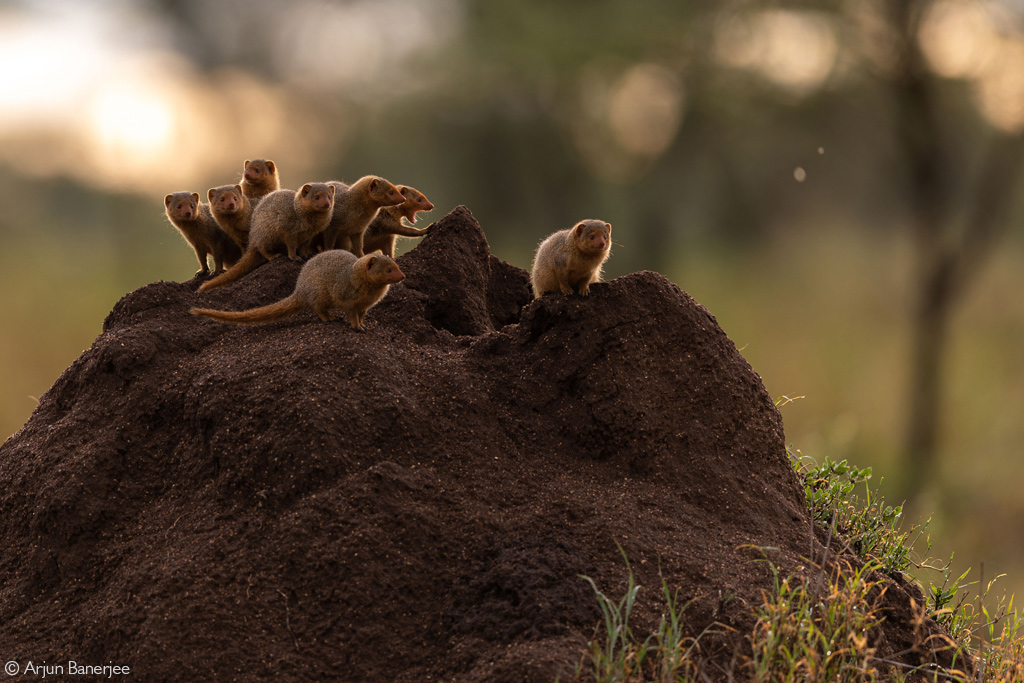
Quick dwarf mongoose facts
| Length | 18-30cm |
| Mass | 210-350 grams |
| Social structure | Groups of up to thirty |
| Gestation | 49-53 days |
| IUCN Red List classification | Least Concern |
Dwarf mongoose: tiny terrors of the bush
During the day, dwarf mongoose move through the vegetation in search of predominantly insect prey (but will also feed on reptiles, small mammals and birds). However, standing just a few centimetres off the ground makes it almost impossible to maintain visual contact, and thus vocal communication is of tremendous importance in dwarf mongoose societies. They chatter almost constantly to each other via a series of contact squeaks. Threats are communicated through a multitude of alarm calls, which convey not only the type of threat (bird, snake, and so on) but also the urgency. Some calls will make the entire group stop and look around, while others will send them scurrying for the nearest cover.
Fierce though the little animals may be, they are still on the menu for various birds of prey, mammalian predators and snakes. Like most members of the mongoose family, dwarf mongoose have some innate resistance to snake venom, but contrary to popular belief, this does not confer complete immunity.

Miniature monarchs
A dominant pair lead dwarf-mongoose groups, usually consisting of the oldest male and female. These pocket-sized patricians are the only ones guaranteed to reproduce, while the rest of the group (composed of related and unrelated individuals) focuses on protecting the pups each season. This can entail everything from babysitting and guarding the den to providing food and teaching the pups valuable hunting skills. Like meerkats, some subordinate females (around 12%) mate and fall pregnant, but these offspring are usually either aborted or killed by the dominant female. The reproductive cycles of all group females are highly synchronised, meaning that they enter oestrus within days of each other. Consequently, subordinate females may further contribute by lactating and suckling the dominant pair’s pups.
Naturally, the drive to reproduce is a biological imperative. So, subordinate mongooses are left with two options: wait their turn for a shot at the top position or disperse and find another group with better prospects. In dwarf mongooses, both males and females disperse, though males are more likely to do so.
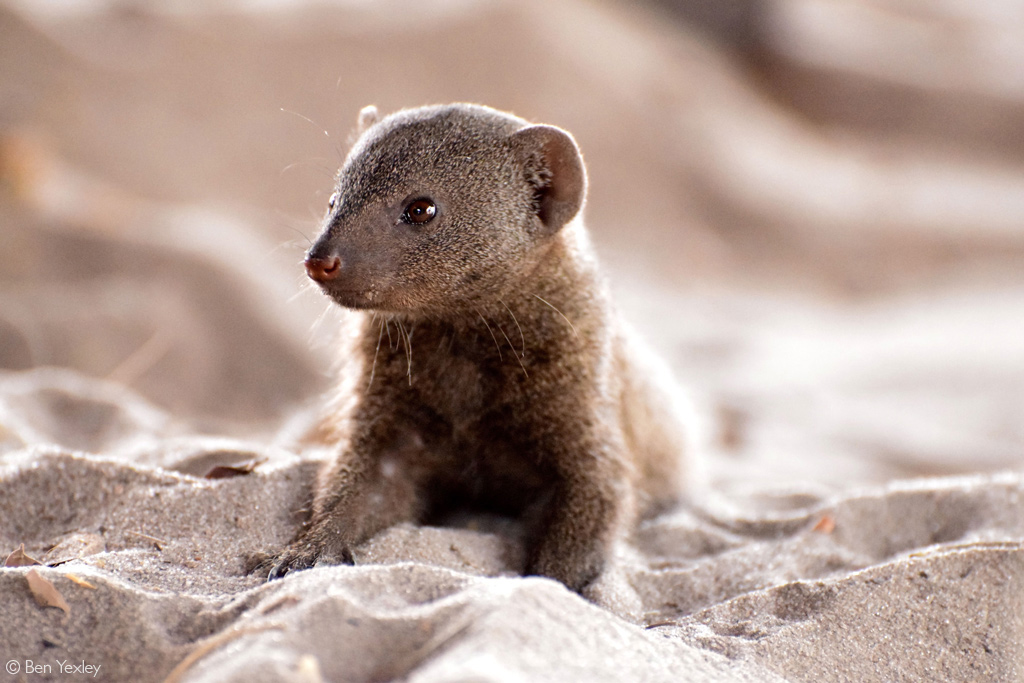
Playful pups, hungry hornbills (and viral videos)
Pups are born during the rainy season when insect prey is abundant and prosperous groups may raise several successive litters of four to six pups yearly. The minuscule pups are born into a dangerous world, and even the relative security of their termite mound dens does not guarantee their safety. Snakes represent a constant threat to young babies, so den-bound young are left with babysitters. At the same time, the rest of the group forages. If a snake is spotted, these babysitters will sound the alarm and even mob and distract the offending reptile while the pups are transported to safety.
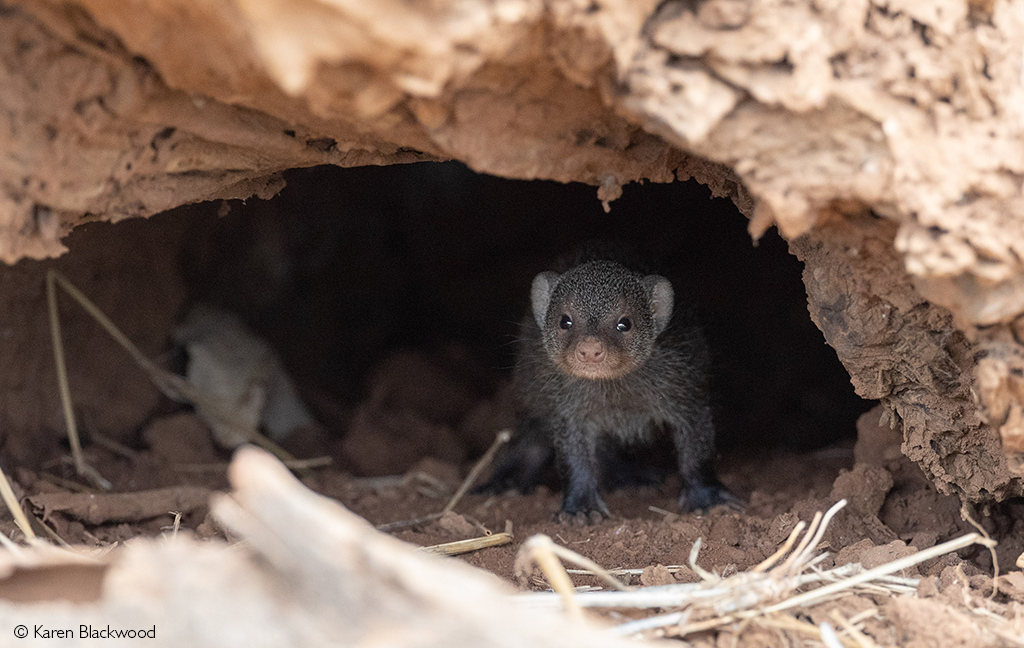
When the pups emerge from the den, their world is filled with things to explore and lessons to learn. With the energy intrinsic to the young of all mammals, they immediately engage in nibbling, wrestling, begging for food and, hilariously, scent-marking. The latter is particularly entertaining because dwarf mongoose have scent glands positioned under the tail, and the secretions are deposited as high above the ground as possible (conveniently at nose level for the receiver). Given their rather stubby legs, this contortion involves a handstand accompanied by an impressive wiggle. For uncoordinated, growing pups, it is a movement that is particularly difficult to master.
Another important lesson for dwarf mongoose pups is good relations with their neighbours. Dwarf mongooses have a particularly fascinating mutualistic relationship with hornbills. The hornbills can scoop up the insects disturbed by the foraging mongooses while providing additional security through watchful eyes at a higher vantage point. This association is so beneficial to both parties that they will await the arrival of the other before setting out for the day. However, in one now-viral incident, a baby mongoose was recorded inviting the hornbill to play with it by “pretending to be dead“.

Sentinels, signals, and snubbing
In addition to pup rearing, dwarf mongoose engage in several other cooperative behaviours, including acting as sentinels and allogrooming. Through observing these behaviours, scientists have gleaned a wealth of information about the subtleties of dwarf mongoose ethology. For example, serving as the group’s lookout is a particularly revealing behaviour as it comes at some cost to the individual in the form of lost foraging and feeding opportunities. It also requires considerable trust because, although the rest of the group remains alert, a dozy sentry could spell death from above or below. Research has shown that new arrivals (immigrants) are considered less “trustworthy” as sentinels for up to five months until they have earned the group’s trust. Conversely, the male and female of the dominant pair appear to be regarded as the most reliable sentinels.
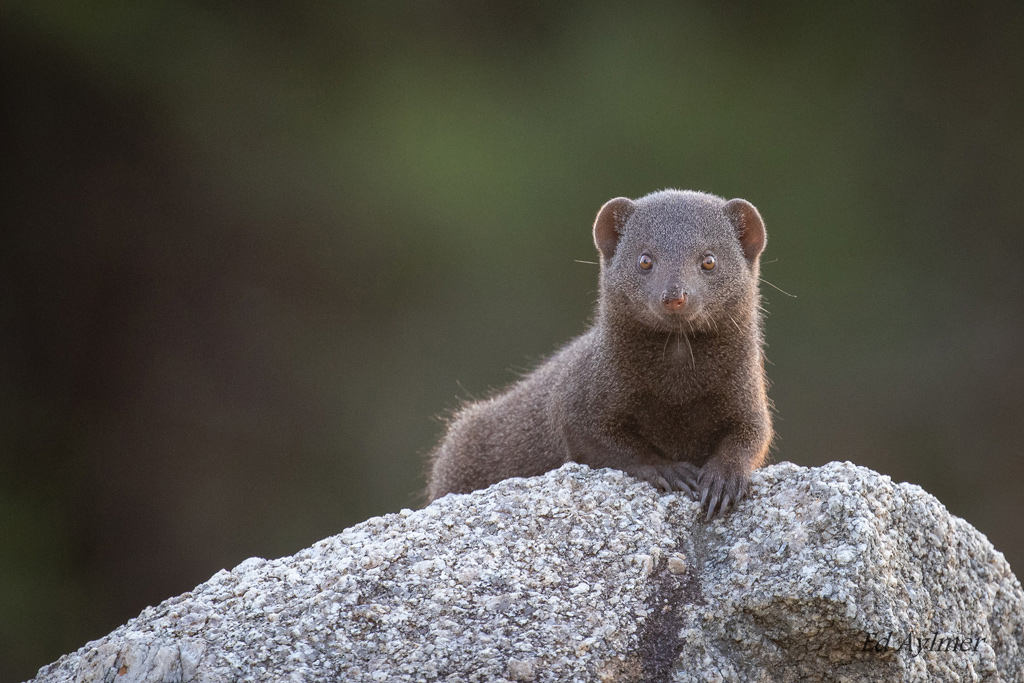
Though acting sentinel may seem a burdensome task, experts have also found it well-rewarded come sunset. Just before they retreat below ground for the night, the group members gather together at the entrance of their chosen burrow and set about grooming each other. Allogrooming reinforces the bonds between group members and helps to reduce anxiety levels. Animals that acted as sentinel each day were rewarded with this affirming grooming during these socialisation periods, suggesting that dwarf mongoose are not only aware of which individuals are putting in the work but capable of retaining that information throughout the day. Even more astounding, troublemakers that instigate aggressive encounters are also noted with disdain and “punished” at the end of the day with less attention. In other words, bullies are essentially snubbed by the rest of the group!
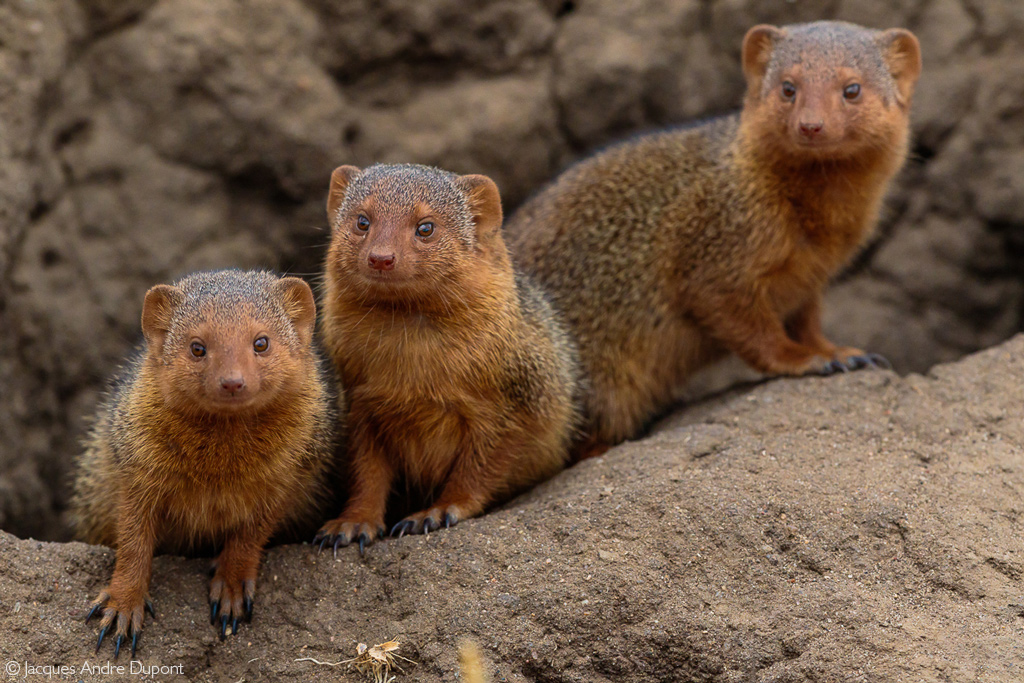

Final thoughts on dwarf mongoose
A dwarf mongoose sighting is usually first announced by a streak of brown fur flashing across the track. But sit tight, and you will hear the chirrups of the rest of the group as they regroup. With patience, their natural curiosity generally wins out, and little heads will emerge to investigate the situation with bright eyes. While lions and elephants are always exciting finds, it is always worth remembering that Africa’s little animals can be just as enthralling.
To comment on this story: Login (or sign up) to our app here - it's a troll-free safe place 🙂.![]()






